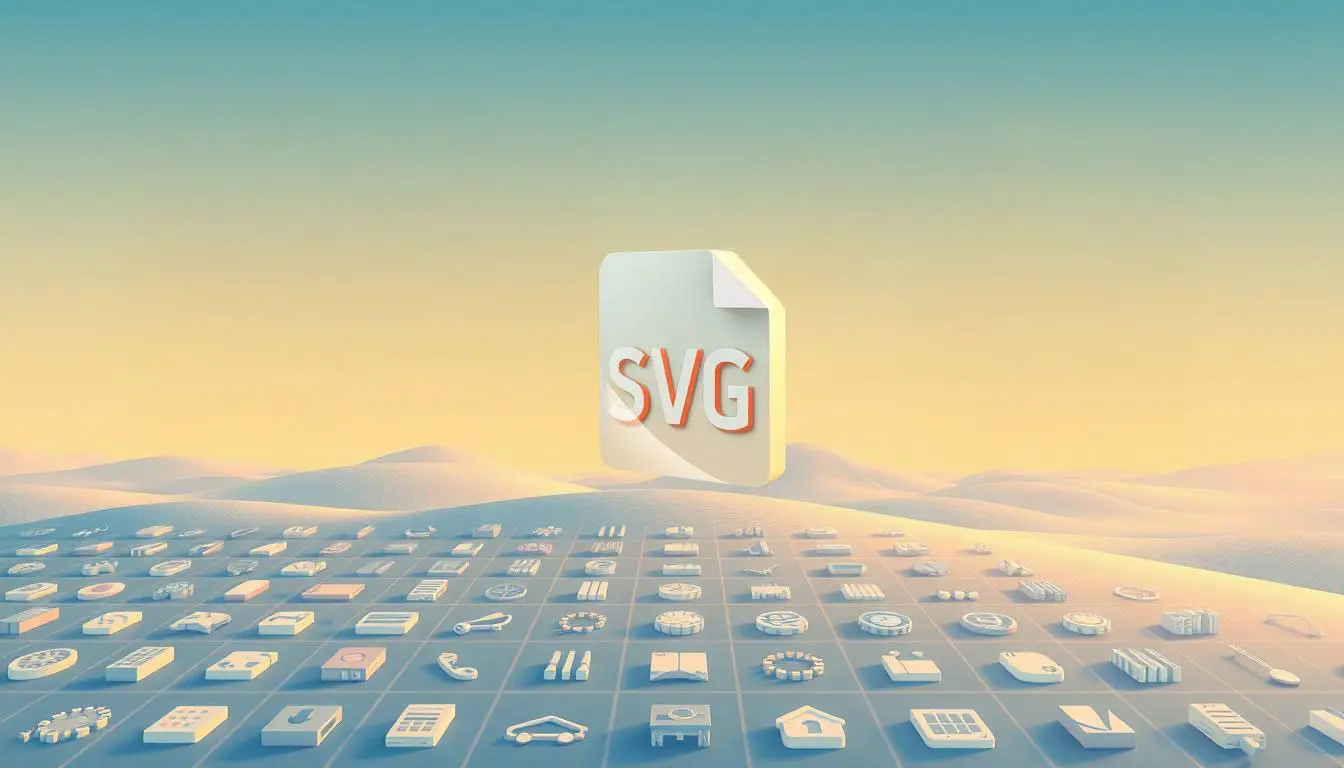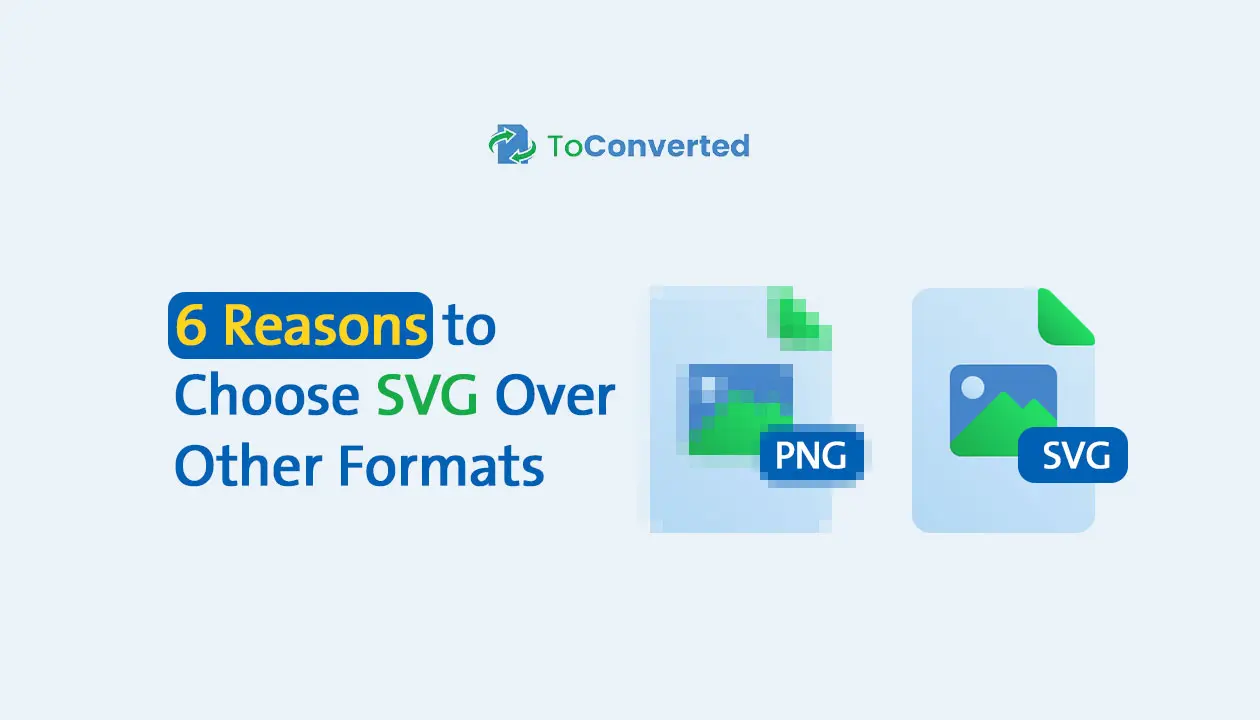By Yassine Tazi
Websites with SVG formats can load up to 40% faster than those with traditional images. This shows how important scalable vector graphics are today. SVG logo formats keep their quality and clarity, no matter the size. They are now the top choice for web designers and developers.
In this article, you'll learn six key reasons to choose SVG over other formats. These reasons ensure your projects look great and run smoothly. Ready to improve your designs with SVG's versatility and efficiency?
Understanding SVG Formats and Their Benefits
SVG formats, short for Scalable Vector Graphics, are a top pick for web design. They are based on XML and keep their quality no matter how big they get. This makes them great for creating sharp, detailed graphics.
What Are SVG Formats?
The SVG file format is a vector image that uses text-based XML. You can change and style SVG images with CSS and JavaScript. This makes it easy to create detailed designs that stay clear, no matter the size.
SVG formats are perfect for responsive web design. This is why developers love them.
Comparing SVG to Raster and Other Vector Formats
SVG images are different from raster images. Raster images are made of pixels and get blurry when you zoom in. SVG images, on the other hand, use math to stay clear at any size.
Knowing the differences helps you choose the right graphic for your project. Here's a quick comparison:
| Feature | SVG Formats | Raster Images | Other Vector Formats |
|---|---|---|---|
| Quality on Scale | Retains clarity at any size | Loses quality when enlarged | Can vary based on format |
| File Type | Vector | Raster | Vector |
| Editing Flexibility | Highly editable with CSS and JS | Limited edits after creation | Some formats allow edits, but not as flexible as SVG |
The Advantages of Choosing SVG Over Other Formats
Scalable vector graphics (SVG) are a top choice in digital graphics for good reasons. They boost both looks and performance, making for a better user experience. Here are some key reasons why SVG is better than other formats.
Scalability: Always Crisp and Clear
SVG's biggest plus is its ability to stay sharp at any size. Whether you zoom in or out, SVG images stay clear. This is great for web designs and apps, ensuring your graphics look perfect on any screen.
File Size Efficiency: Lightweight and Fast Loading
SVG files are smaller than most images. This means they load faster, improving your website's speed. Faster loading times mean happier visitors and a better experience for everyone.
Animation and Interactivity: Elevate Your Designs
SVG files are also great for animations and interactive elements. You can make your graphics come to life with SVG code. This makes your designs more engaging and up-to-date.

| Feature | SVG Format | Raster Formats |
|---|---|---|
| Scalability | Yes | No |
| File Size | Generally smaller | Larger |
| Animation | Supports | Limited |
| Interactivity | Supports | No |
| Common Use Cases | Web graphics, icons, logos | Photos, detailed images |
Conclusion
Choosing SVG formats for your graphic design projects can really boost your work's look and feel. SVGs are special because they can grow or shrink without losing quality. This makes them perfect for designs that need to be flexible and interactive.
SVGs are also great because they're light and quick to load. This means your designs will look good and work fast, no matter where they're seen.
When you look at different vector graphics formats, SVG stands out. It's made to be efficient and keep images sharp at any size. If you haven't tried SVGs yet, now's the time to start exploring.
Exploring SVGs can take your designs to the next level. It's a way to make your work stand out in a digital world that's always changing. By using SVGs, you'll make your designs better and stay ahead of the curve.
FAQ
What are SVG formats?
SVG formats, or Scalable Vector Graphics, are an XML-based file format. They are designed for two-dimensional vector graphics. SVGs allow for unlimited scalability without losing quality, making them perfect for web graphics and design.
Why should I choose SVG over raster formats?
SVG images are different from raster formats because they are not pixel-based. This means they keep their clarity at any size. This makes your visuals always crisp and clear, improving the user experience.
Are SVG files smaller than other image formats?
Yes, SVG files are generally more lightweight than raster images. This smaller size leads to faster loading times and better website performance. SVG is an efficient choice for web design.
Can I animate SVG graphics?
Absolutely! SVGs can include animation and interactivity. This lets designers create dynamic visuals that grab user attention and enhance design projects.
How can I convert an image to SVG format?
You can convert images to SVG format using online converters or graphic design software. This keeps quality high while using SVG's benefits in your projects.
What are the practical applications of SVG graphics?
SVG graphics are used in web design for logos, icons, illustrations, and complex graphics. They need scalability and clarity. Their lightweight nature also makes them great for responsive design, keeping visuals sharp on all devices.
What is the file extension for SVG files?
The file extension for SVG files is .svg. This helps identify them as scalable vector graphics, setting them apart from other image formats.
